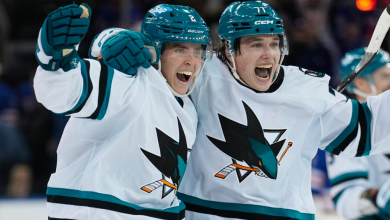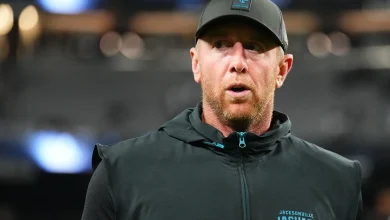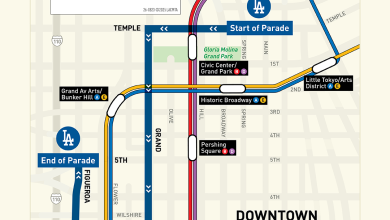Should Kazuma Okamoto Be Cubs’ Top Target in MLB Free Agency This Offseason?

Though neither Kazuma Okamoto nor Munetaka Murakami qualified for the batting title in Japan this year, if you bring down the required number of plate appearances to 200, they sit atop the leaderboard for offensive production. Okamoto, 29, batted an eye-popping .327/.416/.598 in 69 games and 293 plate appearances. Murakami, 25, finished fifth in NPB in home runs (22), despite playing just 56 games. Overall, he hit .273/.379/.663 in 224 trips to the plate.
Obviously, both sluggers will be in high demand this winter, but it’s likely to be at two different levels. Murakami has been a bigger name in American baseball circles for the last several years, because he flashed prodigious power at a young age and because it’s long been known that he had interest in coming to the States. In 2022, he hit 56 home runs, proving his pop to be not just good, but potentially elite, and he’s always demonstrated good plate discipline. Since he’ll come to MLB at age 26, there’s a good chance he’ll make over $200 million on a long-term deal.
Okamoto doesn’t have the same buzz. He’ll turn 30 next June, and has been a regular in NPB for eight seasons. He’s always hit well, with a career line of .277/.361/.521, but he’d never demonstrated the ability to dominate quite the way he did when he was on the field in 2025. He did hit at least 30 home runs in every season from 2018 through 2023, but that dipped to 27 in 2024 and to 15 (albeit only because of injury) in 2025. Projections for his earning power this winter have come in closer to the deals signed by Seiya Suzuki (5 years, $85 million) and Masataka Yoshida (5 years, $90 million) when they came over in successive offseasons. Okamoto is older than either of those two were when they made the move, too, so he’s likely to sign an even shorter-term deal.
However, for multiple reasons, the Cubs should take a greater interest in Okamoto. He’s the better fit for their roster, their home park, and their competitive window—and he might just be the better player, anyway. Okamoto bats right-handed, whereas Murakami bats lefty. As we’ve discussed here recently, the Cubs already have Michael Busch, Pete Crow-Armstrong, Ian Happ, Owen Caissie and Moisés Ballesteros to hurt right-handed pitchers from the left side, and they need to emphasize righty power instead.
It’s also important to note that, while Murakami’s ceiling appears to be higher, Okamoto is the one with the more obviously translatable skill set. Murakami has struck out over 28% of the time in three straight seasons and whiffs on more than 30% of his swings, even in NPB. Okamoto, by contrast, struck out in just 11.3% of his plate appearances this year and hasn’t struck out at a rate of 20% or higher since 2019. He makes contact on roughly 80% of his swings in Japan. Both players are patient, but Murakami’s swing rate spiked in his interrupted season in 2025; Okamoto’s has been steady.
When they each played for Samurai Japan in the 2023 World Baseball Classic, Okamoto was the standout. In 27 plate appearances, he batted .333, hit two home runs, and drew eight walks against four strikeouts. Among players with at least 20 trips to the plate in that tournament, only Randy Arozarena, Trea Turner, Shohei Ohtani and Anthony Santander had a higher OPS than Okamoto’s 1.278.
Both Murakami and Okamoto are third basemen who have been splitting their time and moving over to first base at times over their last few years in Japan; both are expected to play more first base in the States. Each is a good size (Okamoto: 6-foot-1, 220 pounds; Murakami: 6-foot-2, 213), but a bit slow. Of the two, Okamoto is the better defender right now, and he’s even been shifted into the outfield for fistfuls of games over the last few years. In the medium-term future, one should bet on Murakami to have more defensive value, because he’s considerably younger, but Okamoto will be more useful as a four-corners player in 2026.
Okamoto is just a much better fit for the Cubs, who have every chance to win now and need a right-handed slugger to slot into their lineup to make the most of that opportunity. He can platoon with Busch at first base and play plenty of third base against righties, but also mix in at designated hitter as Suzuki (likely) moves back to right field on something close to a full-time basis. A lineup against righties could go:
- Nico Hoerner – 2B
- Michael Busch – 1B
- Seiya Suzuki – RF
- Ian Happ – LF
- Kazuma Okamoto – 3B
- Moisés Ballesteros – DH
- Dansby Swanson – SS
- Miguel Amaya – C
- Pete Crow-Armstrong – CF
Against lefties, they could switch that to:
- Nico Hoerner – 2B
- Seiya Suzuki – DH
- Ian Happ – LF
- Kazuma Okamoto – 1B
- Dansby Swanson – SS
- Matt Shaw – 3B
- Kevin Alcántara – RF
- Carson Kelly – C
- Pete Crow-Armstrong – CF
Craig Counsell would have the luxury of mixing and matching within that group, swapping Alcántara into center to spell Crow-Armstrong against some lefties; leaving Busch in against some southpaws while sliding Okamoto to DH; or even spelling Hoerner by using Shaw at the keystone. That assumes that none of Shaw, Ballesteros or Alcántara are traded, but a major offensive addition like Okamoto would make it easier to do just that if the situation demanded it, thereby opening up the starting pitching market for Chicago.
The inroads the team has made in Japan through their signings of Suzuki and Shota Imanaga (among others) make the Cubs a frequent subject of rumors when stars come over from NPB. That won’t change this winter, and it shouldn’t. Starting pitcher Tatsuya Imai is another name that will be linked with the team often in the weeks ahead. There’s a good case to be made for simply directing their spending toward Imai. When it comes to the dilemma between the top two power hitters coming Stateside, though, the clear preference should be for Okamoto.





